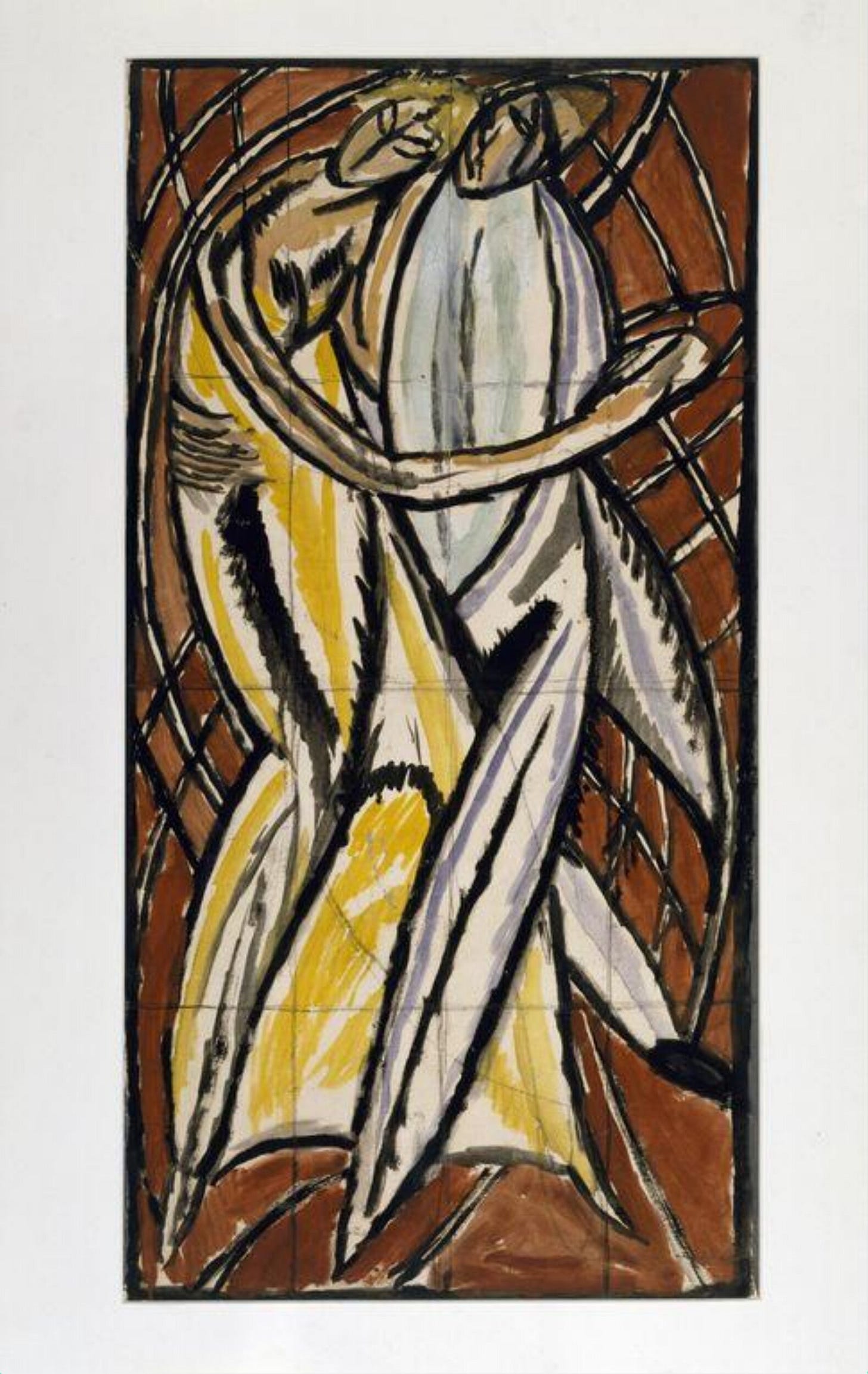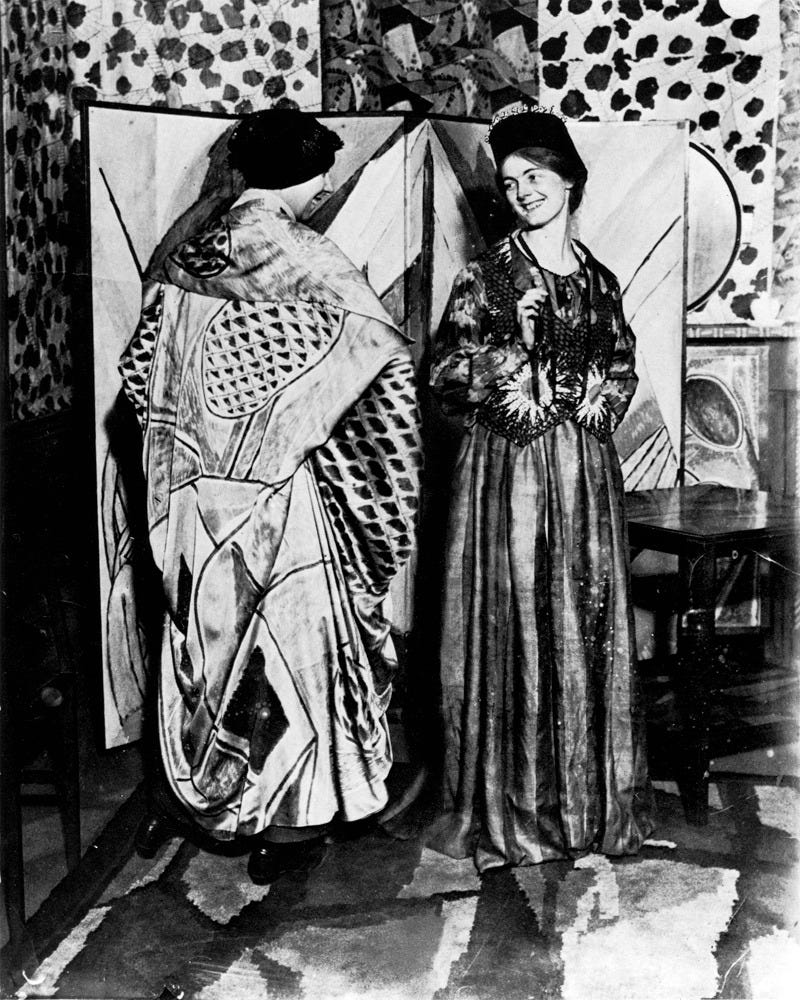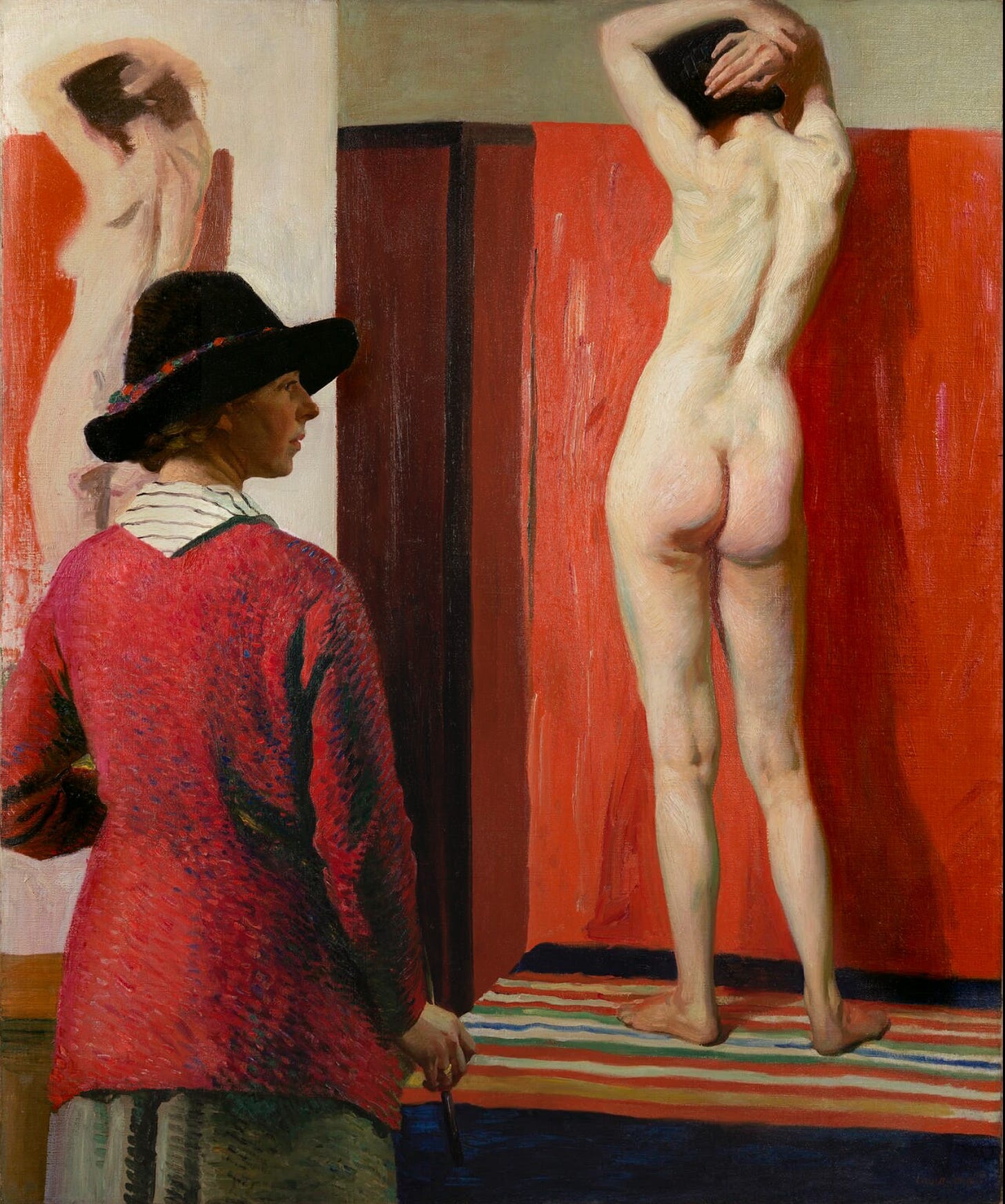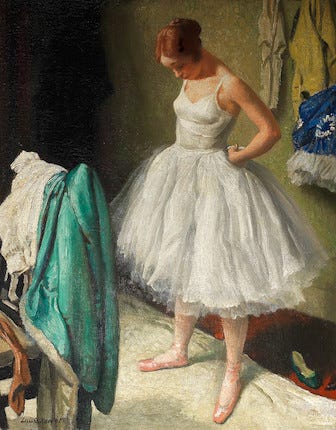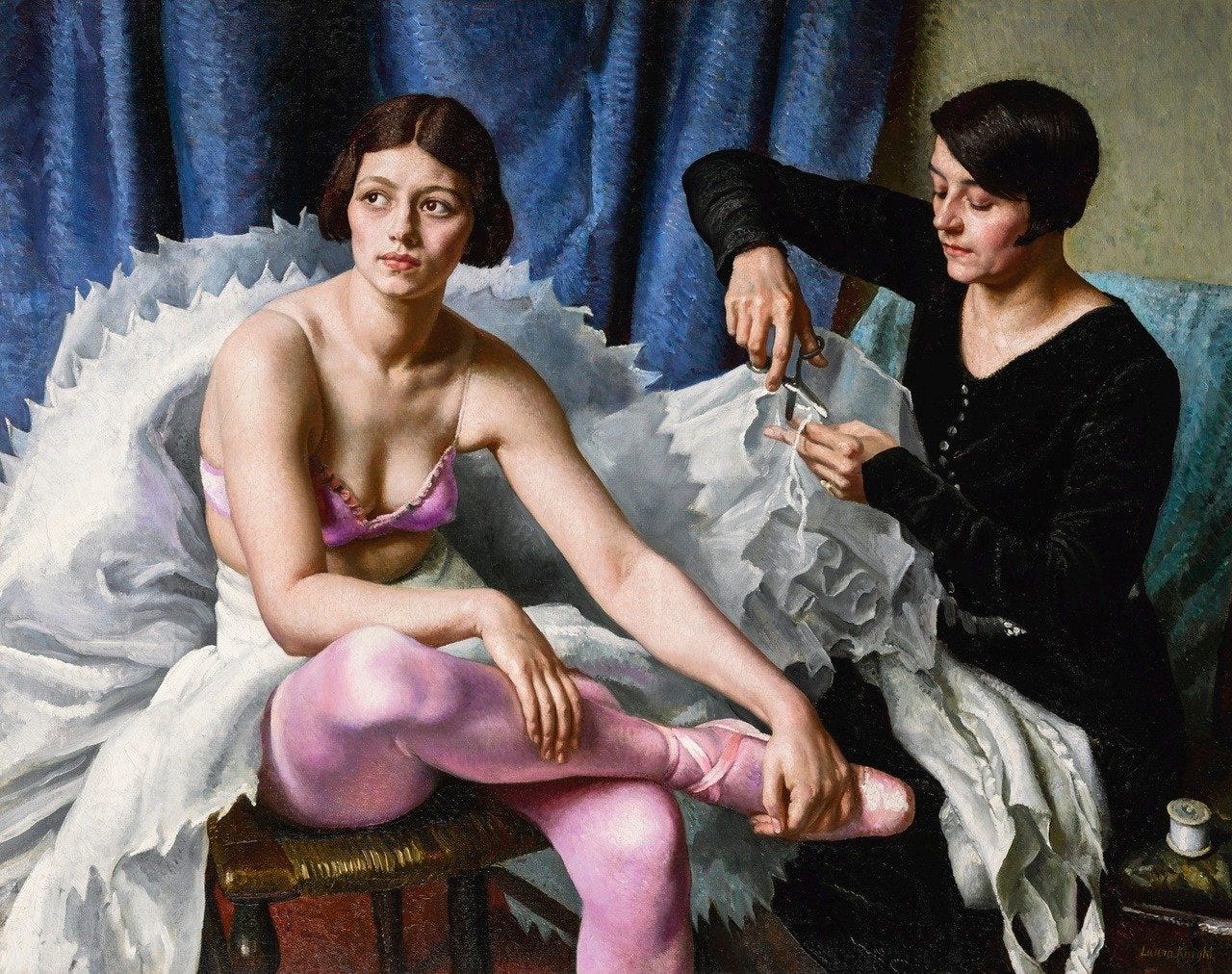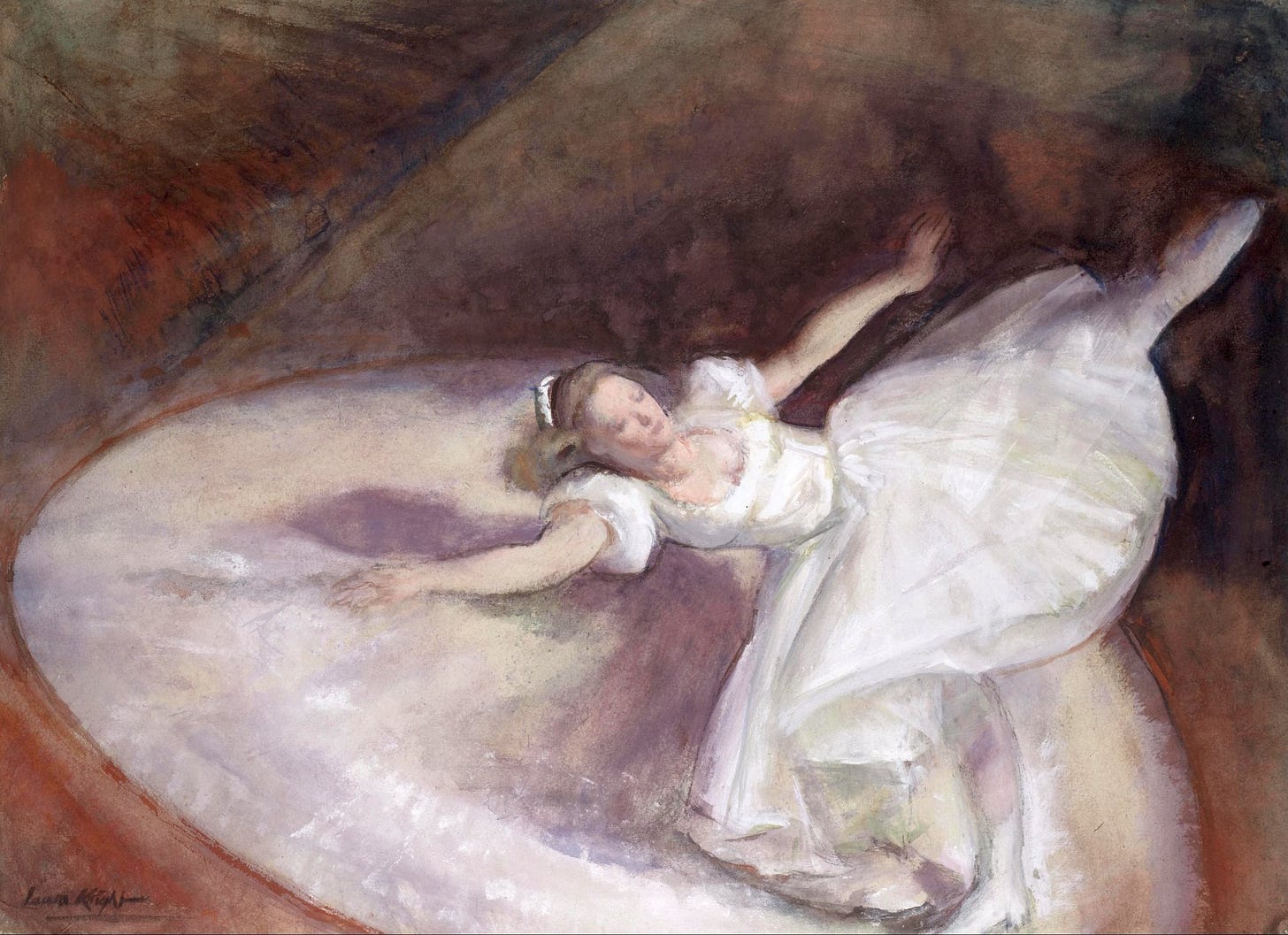A History of Art and Dance
Did you know about the many collaborations between artists and dance?
Dear Great Women Art Lovers,
Recently, I’ve been looking into the history of art and dance, and the collaboration between the two. This fascination came about after seeing a drawing by Leonor Fini that was in fact a costume sketch for Le Rêve de Leonor (‘The Dream of Leonor’), a ballet based the artist’s dream, which premiered at London’s Royal Opera House in 1949.
Inspired to dig deeper, I found eight (dazzling) further examples of artist/dance collaborations by the likes of Vanessa Bell, Laura Knight, Florine Stettheimer, Lygia Clark, Paula Rego, Tacita Dean, and more. I love it when artists push their work outside its traditional realm, and for anyone wanting to view contemporary takes, The Met Opera in NYC have an incredible artist programme.
OK! Let’s have a look. Xoxo
Bloomsbury and the Ballet Russes
In the summer of 1911, after many successful seasons in Paris, Sergei Diaghilev’s avant-garde ballet premiered in London. Met with acclaim, the Ballet Russes went onto perform almost half their programme in the city.
One fan included Leonard Woolf (husband to Virginia). While he initially took up a box at the Royal Opera House for the opera, it was the ballet that he found enthralling. In his book Beginning Again, he charts his excitement at watching the Ballet Russes:
“Profound changes were taking place … in painting we were in the middle of the profound revolution of Cézanne, Matisse and Picasso … and to crown all, night after night we flocked to Covent Garden, entranced by a new art, a revelation to us benighted British, the Russian Ballet in the greatest days of Diaghilev and Nijinsky.”
Dance became the talk of the town. Artists, too, were inspired – as evident in Vanessa Bell’s (1907-1961) Couple Dancing (1913), a picture displaying two figures wrapped up in tenderness and movement:
The Ballet Russes were radical because of their interplay between choreographers/ dancers, artists/ designers. Diaghilev’s productions saw stages and costumes by the likes of Léon Baskt, Pablo Picasso, Henri Matisse and Coco Chanel. Through collaboration, the Ballet Russes created an immersive viewing experience, and Bell’s Couple Dancing reflects this philosophy. She also made wall panels inspired by Matisse’s set of The Dance.
But the interaction between Bloomsbury and ballet went much further. Inspired by Diaghilev’s philosophy, they established The Omega Workshop two years after the ballet came to town, on similarly collaborative grounds. Artists Vanessa Bell, Duncan Grant, Roger Fry, Clive Bell, Nina Hamnett and Winifred Gill all produced artworks for the workshop. And, like the ballet, Omega elevated notions of decoration and design from its previous lowly status.
In the midst of the Second World War, the Bloomsbury Group brought theatre to Sussex. When Vanessa Bell, Clive Bell and Duncan Grant were all living at Charleston (their Sussex farmhouse), they supported the opening of The Miller’s Gallery, an arts centre on the high street, which featured exhibitions, performances and lectures. Everyone had a role: Vanessa Bell and Grant showed their work; Clive Bell curated exhibitions and wrote articles for the gallery; E.M Forster gave readings; and Russian ballet dancer Lydia Lopokova hosted salons.
In 1943, with a number of artists and designers now in Lewes, the group laid out plans for a theatre and arts centre. The plan featured designs for a 300-seater theatre complete with a library, a kitchen, a restaurant, offices, and studios. Each detail was designed and decorated by an artist: from the the auditorium to the stage, box office to the stage curtains, and more.
In 2023, the project was finally (partially) realised when the The Charleston Trust opened Charleston Lewes, with the hope of finding a permanent Bloomsbury gallery in the town. It’s one of my favourite places. Make sure you visit!
The group also socialised with dancers. Ballet dancer Vaslav Nijinsky and artist Duncan Grant frequented the parties of Bloomsbury affiliate Lady Ottoline Morrell, and Grant even kept an image of Nijinsky in his studio, and later painted him (see above).
Plus, Economist John Maynard Keynes married the Ballet Russes ballerina, Lydia Lopokova.
Laura Knight’s Nights at the Theatre
To my mind, Laura Knight (1877-1970) is best known for her groundbreaking painting Self Portrait (1913), housed at the National Portrait Gallery. But from this work, we can glean her interest in performance: the nude figure’s position on a plinth, her posed stance, and the clothed figure’s gestural glance to the right.
The same year Self Portrait was painted, Knight began painting scenes of ballet and theatre, having frequented Bertram Mills’ Circus and the Ballet Russes’ Carnival and Les Sylphides. As debate about whether women artists were allowed in life drawing classes raged on, in this circumstance, Knight’s womanhood was advantageous. It permitted her to go backstage, where she could observe both the atmosphere and the dancers up close. Here’s an example:
In Knight’s autobiography The Magic of a Line, she wrote about the the value of studying ballet:
“I firmly believe the most valuable study I ever have was in my attempt to draw ballet. Never before had I tried to make the pencil speak in a language of its own …the best study I have never had was trying to draw the moving figure.”
Knight soon struck up a friendship with the iconic ballerina Anna Pavolva – the first ballerina to dance The Swan solo from The Carnival of Animals. A dance which has influenced modern performances of Odette in Swan Lake. Watch here; so beautiful:
Knight drew and painted Pavlova numerous times – as seen in the image below of Pavlova rehearsing The Swan. Here, you can see Knight capturing movement of the dancer’s hands as seen on film. I love how Knight fills the paper around Pavolva’s figure with sketchy lines to capture the essence, and delicacy, of her movement.
Keep reading with a 7-day free trial
Subscribe to The Great Women Artists to keep reading this post and get 7 days of free access to the full post archives.







